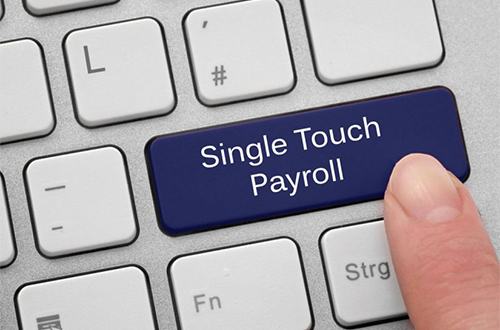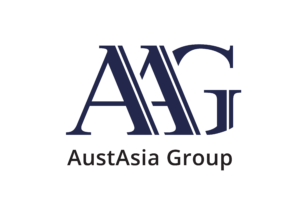Many clients will be aware that the ATO has been moving its activity to data matching and to be able to match up information from different sources to enable them to narrow down any missed revenue from a tax perspective.
The ATO started this process 12 months ago when it introduced Single Touch Payroll (STP) for any employer with over 20 staff. Legislation has been enacted which will require all employers to begin using STP reporting from 1 July 2019.
The ATO is implementing a new system to streamline and replace reporting for:
- Annual PAYG Payment Summaries for Staff
- Quarterly Superannuation Reporting

We have summarised the changes, as shown in the attached table, to clarify what this all means for clients. Essentially, you will have to ensure that wages and super are complied with to the best of your ability and on time:
- When superannuation should be paid (from your payroll system); and
- When superannuation funds receive superannuation, it will match data with the Tax File Number of each staff member and then to their nominated fund.
The ATO is using this to assist in managing compliance with the superannuation guarantee and will continue to do so.
The new system has the potential to change how employees are engaged as well. Tax File Number Declarations and Superannuation Nomination forms can be lodged online, and they will link between the employee’s MyGov account with the Australian Government and the employer’s payroll system.
There are different ways that this affects different clients and different businesses, which we summarise as follows:
Employers with 20+ employees (large employers)
STP became mandatory on 1 July 2018 for large employers. If you have 20 or more employees, you should already be reporting through STP or at least have an agreed deferral if you couldn’t meet the initial date.
If you have more than 20 employees and have not activated your STP, please contact us. We can review your current accounting mechanisms to ensure we are in compliance.
Employers with 5-19 employees (small employers)
Small employers must start STP reporting any time from 1 July – 30 September 2019. Using payroll software that offers STP, you can update your product and start reporting anytime. Your software provider will be able to supply you with information on how to update your software to a complying version. If you won’t be ready to start reporting before 30 September 2019, you must apply for a deferral. Contact us, and we will send you the forms. We can also assist you with how to apply with the ATO to opt in early.
Employers with 1-4 employees (micro employers)
If you have four or fewer employees, you must start STP reporting any time between 1 July and 30 September 2019; however, you will have two options.
Option 1: Use compliant payroll software. We strongly recommend that you upgrade or subscribe to STP-compliant online accounting software, which will streamline your bookkeeping requirements.
Suppose you don’t currently use compliant payroll software. In that case, the ATO has compiled a list of software providers who have produced no-cost and low-cost STP solutions – including simple payroll software, mobile phone apps and portals. We can provide you with some of these options, as we are qualified advisors and partners for Xero, MYOB and Quickbooks (Intuit).
Option 2: To engage AAG to report your STP data to the ATO monthly or quarterly. This service will be an additional charge to you and is only available until 30 June 2021, after which you must use compliant payroll software.
Employers with ‘closely held payees’
You have flexible reporting options if you are an employer with ‘closely held payees’. A ‘closely held payee’ is directly related to the entity from which they receive payments, for example:
- Family members of a family-owned business
- Directors or shareholders of a company
- Trustees or beneficiaries of a trust
You will receive a separate email from us by 31 May 2019 advising whether you are registered with the ATO as an employer with ‘closely held payees’. If you do not receive an email from us by 31 May 2019 and believe you are an employer with ‘closely held payees’, please get in touch with us.
Even though the requirement to use STP is delayed for employers with ‘closely held payees’ until 1 July 2020, it is advised that early adoption of STP should commence.
If you haven’t started using STP yet, you will need to do the following before 1 July 2019:
- Update your payroll system so that it can complete STP requirements. We are partners with several software providers, including Xero, MYOB and Quickbooks, so we can assist with special pricing and offers that we have received from those different software providers or
- Apply to be a ‘closely held employer’ with the ATO or
- Apply for a deferral; or
- Advise us, and we will assist you in completing these payroll reporting requirements.
You must change soon if you still use a manual system to pay your staff.
Summary of the new regime
Employers are generally required to withhold tax from an employee’s salary and wages when they pay the salary. The employer then lodges an activity statement (BAS or IAS) at a relevant time (monthly or quarterly) to pay the ATO the tax withheld. At the end of the year, all the gross salary and wage amounts paid and tax withheld are provided to the employee in a PAYG payment summary. A summarised report is also sent from the employer to the ATO. From there, the ATO ensures all employees are adequately paid, amounts are correctly withheld, and the employer meets their PAYG obligations.
| Single touch payroll – new and current requirements compared | ||
| STP requirements from 1 July 2018 | Current law | |
| Reporting amounts paid and withheld | Reporting amounts paid and withheld | |
|
Substantial entities (20 or more employees) are required to report the following information to the ATO:
Employers that report these obligations (including those that voluntarily report) will not need to comply with several other reporting obligations under the existing law. For the first 12 months, reporting entities will not be subject to administrative penalties, unless first notified by the ATO. |
Employers are generally required to withhold amounts from an employee’s salary when they pay the salary. At a later date, they are required to notify the ATO of the amount withheld, remit these amounts to the ATO, provide each employee with an annual payment summary, and provide an annual report to the ATO. Employers generally have an obligation under SISA Pt 3B and the SIS Regulations to report, consistently with specific data standards, superannuation contribution information to superannuation funds on the same day as the employer contributes to the fund. Employers do not generally have an equivalent reporting obligation to provide information on employee-level superannuation contributions to the ATO. Employers must lodge SG statements with the ATO if they have an SG shortfall for a quarter or if the ATO requires them to do so under the SGAA. |
|
| Choice of fund | Choice of fund | |
|
An employee may make a valid choice of superannuation fund by providing the relevant information to the ATO. The ATO may disclose an employee’s TFN and protected information to their employer in this situation. |
To make a valid choice of superannuation fund, an employee must provide their employer with written notice of that choice. |
|
Under STP, the employer will send a report to the ATO (via Standard Business Reporting (SBR)) every pay cycle that details:
- Each employee’s name and tax file number (TFN)
- Gross amount paid
- Tax withheld on the gross
- Ordinary time earnings for the period, and
- Any superannuation guarantee obligations.
Notable changes under STP
An employer will no longer have to declare gross wages or PAYG withholding information in their BAS. The amounts relating to the employer’s month/quarter will be pre-filled when using the Business or Tax Agent’s Portal.
It is understood that under STP, an employer will no longer have to provide an employee with a PAYG payment summary. Employees can review their gross and tax-withheld payments via the myGov website. Other areas of the payment summary, namely Reportable Employer Superannuation Contributions and Reportable Fringe Benefits, will be pre-filled. It is the intention of the STP regime (as stated in the Bill’s explanatory memorandum) that the employer will still report an annual statement with these figures as part of year-end reporting.
Even though PAYG withholding and superannuation payable to the ATO will be reported every pay cycle, the due dates for payments on each liability will remain the same. The ATO will allow an employer to pay these amounts early; however, this may result in cash flow disadvantages. Also, it is unknown how the superannuation liability will be recognised as it currently does not appear in the ATO Running Balance Account.
New employees will have the option to complete TFN declarations and Super Choice declarations online. This information will then be provided to the employer via STP software.
Implementing Single Touch Payroll
Early implementation of the STP regime can provide your business with efficiencies for reporting tax and superannuation information to the ATO.
Starting 1 July 2018, you must implement a payroll system that reports directly to the ATO with every pay cycle.
This payroll system must be SBR-enabled, so that you can report to the ATO each pay cycle the following items:
- Each employee’s name and tax file number (TFN)
- Gross amount paid
- Tax withheld on the gross
- Ordinary time earnings for the period, and
- Any superannuation guarantee obligations.
Note: The system will be designed to hide the employee’s tax file number from your payroll department staff for security purposes.
The ATO will then report to you each month or quarter the correct amount of PAYG tax withheld to pay in your activity statement. Also, each quarter, information will be available regarding your superannuation obligations to either pay the ATO clearing house or your independent provider.
As part of the new regime, the reports and liabilities owing will be available to you in real-time. This means that, if you wish, you will be allowed to make payments towards PAYG tax withheld and superannuation contributions in your pay cycle before the legislated due date.
If your system is already automated with reports that can provide the information listed above for every pay cycle, the system may need an update to become SBR-enabled.
However, if your system is still manual, it is time to discuss and review your internal processes. The STP regime is mandatory for employers of more than 20 staff from 1 July 2018, and will most probably be compulsory for all employers by 1 July 2019.
Our advice is to become STP-ready to avoid future fines or penalties from the ATO. We are here to help you through the process if you need it. Please do not hesitate to contact our office for support.



